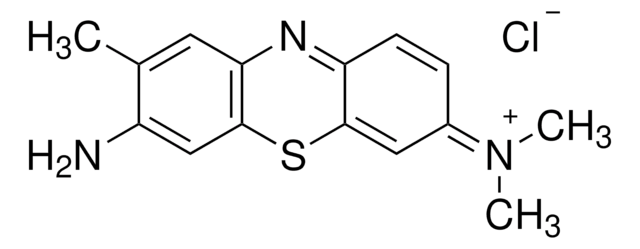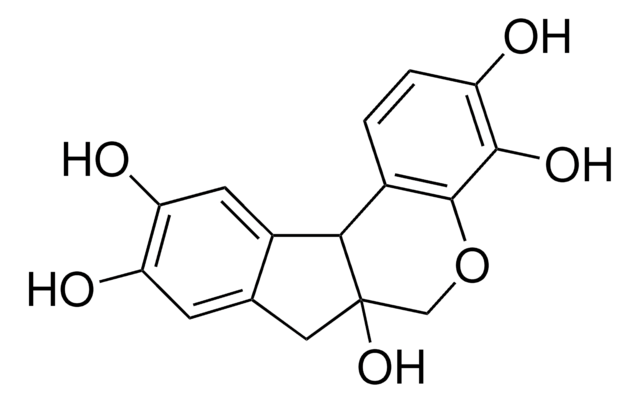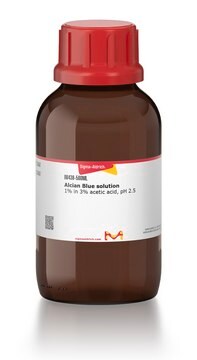89640
Toluidine Blue
8.74% (ZN (THEORY)), for microscopy (Hist., Vit.)
Synonyme(s) :
Tolonium chloride; Basic Blue 17
About This Item
Produits recommandés
Qualité
for microscopy (Hist., Vit.)
Niveau de qualité
Pureté
8.74% (ZN (THEORY))
Forme
powder or crystals
Couleur
green to very dark green
Solubilité
methanol: 0.01 g/10 mL, blue to very deep blue
εmax
≥800 at 621-636 nm in water
Application(s)
diagnostic assay manufacturing
hematology
histology
Température de stockage
room temp
Chaîne SMILES
[Cl-].[Cl-].Cl[Zn]Cl.Cc1cc2N=C3C=CC(\C=C3Sc2cc1N)=[N+](\C)C.Cc4cc5N=C6C=CC(\C=C6Sc5cc4N)=[N+](\C)C
InChI
1S/2C15H15N3S.4ClH.Zn/c2*1-9-6-13-15(8-11(9)16)19-14-7-10(18(2)3)4-5-12(14)17-13;;;;;/h2*4-8,16H,1-3H3;4*1H;/q;;;;;;+2/p-2
Clé InChI
DAQXTSXITPUGRG-UHFFFAOYSA-L
Description générale
Application
- to demonstrate amyloid; DNA in plant material, mast cells, Nissl substance, nuclei, and sulfatides
- in metachromatic staining of sulfated mucins and related materials
- as staining agent to identify the development and accumulation of the cartilage matrix, proteoglycans for isolation and culture of mesenchymal stem cells from mouse compact bone.
- staining of mucins in water-miscible resins and of nucleic acids in epoxy resins(1)
Actions biochimiques/physiologiques
Code de la classe de stockage
11 - Combustible Solids
Classe de danger pour l'eau (WGK)
WGK 3
Point d'éclair (°F)
Not applicable
Point d'éclair (°C)
Not applicable
Équipement de protection individuelle
Eyeshields, Gloves, type N95 (US)
Choose from one of the most recent versions:
Déjà en possession de ce produit ?
Retrouvez la documentation relative aux produits que vous avez récemment achetés dans la Bibliothèque de documents.
Notre équipe de scientifiques dispose d'une expérience dans tous les secteurs de la recherche, notamment en sciences de la vie, science des matériaux, synthèse chimique, chromatographie, analyse et dans de nombreux autres domaines..
Contacter notre Service technique





